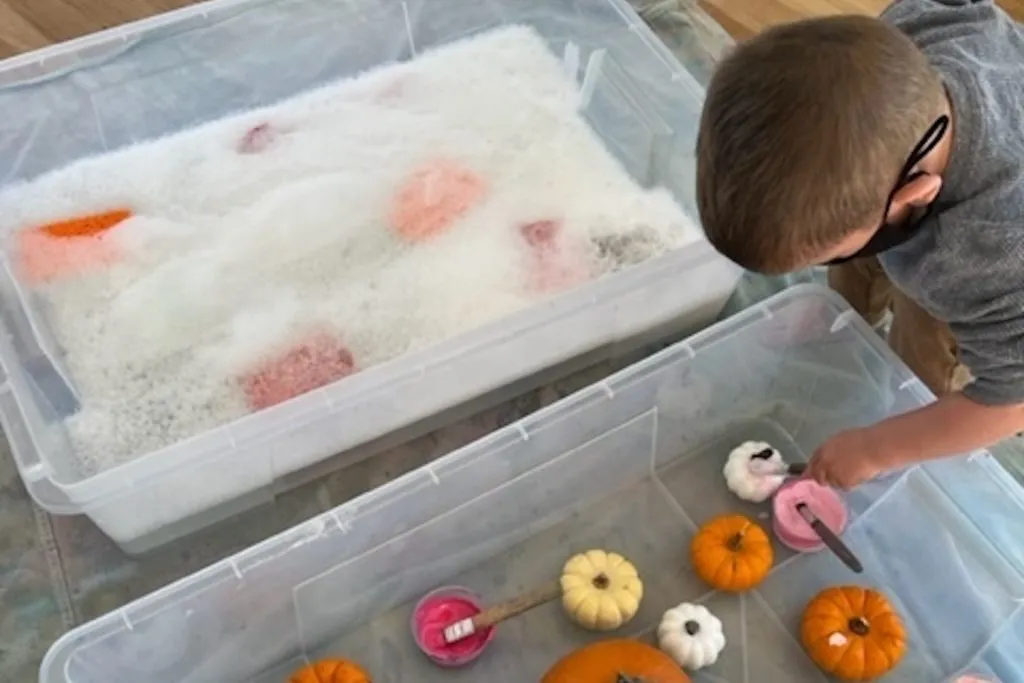Four Strategies for Leading Engaging Experiences in Early Childhood Classrooms


Recently, I had the opportunity to visit my sons, Michael and Matthew’s, kindergarten and preschool classrooms. As a former preschool and kindergarten teacher, being welcomed into their classroom community felt both uplifting and grounding at the same time.
It was uplifting to share my boys’ classroom space and observe as they engaged with their peers, their environment, and the caring adults in their school—watching, almost teary eyed, as they made decisions about their learning with confidence and intention.
It was grounding to confirm my strong commitment to helping fellow teachers strengthen their connections between best practices for how young children learn and the nuances of everyday classroom life, observing and listening to children while considering “How can I use my observations to influence my work at Teaching Strategies?”
The Experience: Offering an Invitation to Create Flower Prints
When I thought about what I might do during my visits, I considered each classroom’s current study topic, the materials I had available, and when to offer the activity so as not to interrupt the daily rhythm of the classrooms. After careful consideration, I decided on offering an invitation to use gel printing plates with flowers during choice time.
After the experience unfolded and I had time to reflect, I identified four key strategies as essential for leading engaging experiences.
1. Be prepared.
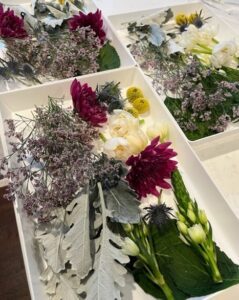 Gathering and organizing supplies ahead of time, as well as preparing the space, is an essential aspect of ensuring you are prepared to lead the experience with confidence and focus. Involving children in the process of setting up can also provide meaningful learning opportunities while additionally reducing the teacher’s workload.
Gathering and organizing supplies ahead of time, as well as preparing the space, is an essential aspect of ensuring you are prepared to lead the experience with confidence and focus. Involving children in the process of setting up can also provide meaningful learning opportunities while additionally reducing the teacher’s workload.
For my planned experience, my preparation included
- protecting the table by covering it with butcher paper;
- inviting children to prepare the florals by trimming the flowers and sorting them onto trays; and
- organizing the supplies in an inviting yet practical way by
○ creating a defined space for each child with a large piece of white paper beneath each printing plate and
○ ensuring the paints and brayers were displayed clearly, enabling children to easily make choices
2. Be flexible.
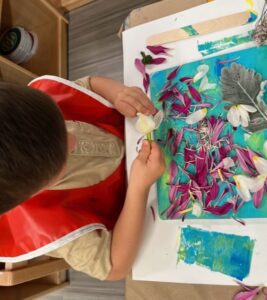
Understanding that not all children may want to engage in the experience and that their interactions during the experience will vary can help you remain relaxed and responsive to individual children as choice time unfolds.
For my planned experience, this meant
- letting children know at the start of choice time that I would be in the Art area with new materials to engage with if they chose to spend time there,
- supporting children to make choices about how they wanted to engage with the materials (“I wonder which types of flowers you will choose to work with. What tool would you like to scoop your paint with?”), and
- responding to children’s ideas and questions (“I noticed you are interested in the brayer. Would you like some time to experiment with it before we work with the flowers and paint?”).
3. Be intentional.
Planning to introduce specific vocabulary, use open-ended questions and comments, and offer deliberate supports can help you maximize learning opportunities in meaningful and authentic ways. However, remaining a silent observer is also a key strategy in supporting children to become engrossed in the experience through uninterrupted time to explore.
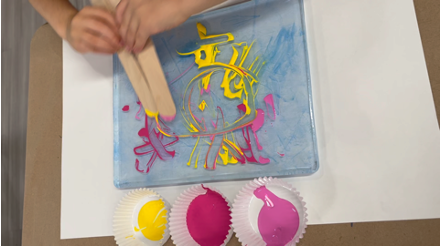
For my planned experience, this meant
- intentionally using the vocabulary terms brayer, printing plate, reverse, and burnish;
- offering specific feedback and asking open-ended questions (“I noticed you are using the brayer slowly and carefully. I wonder what will happen once you lift up your paper.”);
- ensuring that there were options for children to engage with the paint and flowers in ways that felt comfortable to them and minimizing distractions by offering a limited palette of paint and flower choices; and
- remaining a silent observer, gathering documentation, and allowing myself to be fully present.
4. Celebrate the process.
 As with any form of creative expression, the value and opportunity for learning lies in the process, not the final product. This is because the process of creating allows children to explore their ideas, expand their creativity, and express their feelings through the materials. By following children’s lead, we can naturally prompt the most meaningful interactions and establish deep connections to concepts and experiences.
As with any form of creative expression, the value and opportunity for learning lies in the process, not the final product. This is because the process of creating allows children to explore their ideas, expand their creativity, and express their feelings through the materials. By following children’s lead, we can naturally prompt the most meaningful interactions and establish deep connections to concepts and experiences.
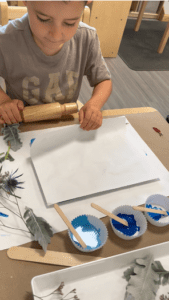 For my planned experience, this meant
For my planned experience, this meant
- observing as children naturally discovered reverse images, textures, and flower anatomy;
- appreciating the uniqueness of each child’s efforts; and
- noticing how children engaged with the materials.
While offering children invitations like the one described in this blog post can lead to profound play and discoveries, it is also important to mention that planned experiences can, and should, look different in each classroom. Some experiences may involve more materials than others, span several days, or even occur outdoors. Invitations to play, no matter how simple the invitation, can help spark children’s creativity, inspire future play, and even bring new energy to the classroom.
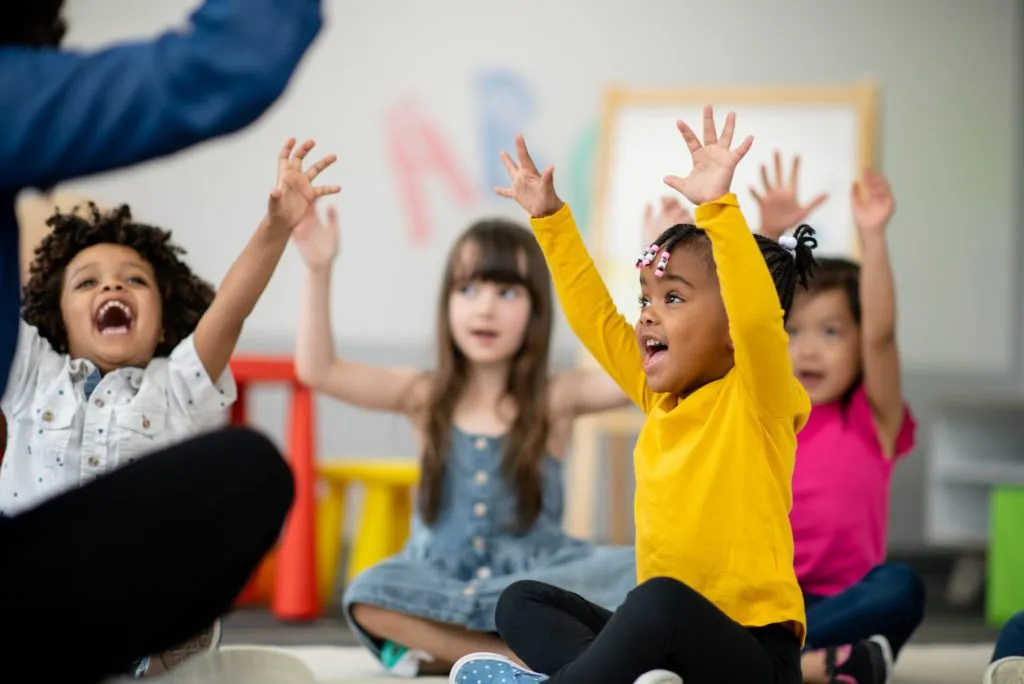
Empower Confident, Creative, Caring Learners
The Creative Curriculum promotes discovery and inquiry with opportunities for children to think critically and develop process skills with rich, hands-on investigations.
Learn More
